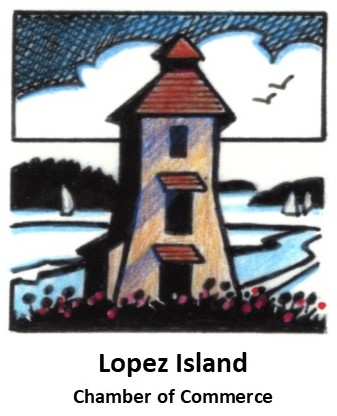Be Whale Wise
Magnificent orca (or killer) whales can be seen in the Salish Sea around the San Juan Islands year-round, as well as humpback and minke whales, Dall's porpoise, Steller sea lions, and harbor seals. Spotting these animals in the wild is a sensational experience. In our enthusiasm, it's easy to forget that our presence has an effect on wildlife. Like us, marine mammals need space to find food, choose mates, raise babies, socialize, and rest. When we get too close, approach too fast, or make too much noise, we may be disrupting these activities and causing the animals unnecessary stress. Set an example for others, and help protect our spectacular marine wildlife.
Regulations for Orcas in the Salish Sea
- Boaters must stay 1,000 yards* from Southern Resident killer whales.
- Boaters must stay 200 yards from the side and 400 yards out of their path in either direction from other killer whales (Bigg’s/Transient killer whales).
- Boaters must go slow (<7 knots) within ½ mile of killer whales.
- Boaters must disengage engine(s) if whales appear within 400 yards.
NOTE: It can be difficult to determine different types of killer whales, especially at a distance when you’re underway. When in doubt, err on the side of caution, treat them as endangered, and follow the appropriate regulations and guidelines.
*There are some areas in the Salish Sea where navigable channels are narrower than 1,000 yards. If you encounter Southern Resident killer whales and you are greater than 400 yards away from the whales, you can motor slowly (under 7 knots) away and out of their path of travel. If you are closer than 400 yards, you must disengage your engine(s) and wait for the whales to pass.
Marine Wildlife Guidelines for Boaters, Paddlers, and Viewers
1. Be Cautious, Courteous and Quiet when around areas of known or suspected marine wildlife activity, in the water or at haul-outs and bird colonies on land; especially in May to September during breeding, nesting and seal pupping seasons.
2. Look in all directions before planning your approach or departure from viewing wildlife.
3. Always approach and depart from the side, moving parallel to the animal's direction of travel. If the animal(s) are approaching you, cautiously move out of the way and avoid abrupt course changes. Do Not Approach from the front or from behind.
4. Place Engine in Neutral and allow animals to pass if your vessel is not in compliance with the approach regulation or guideline (#1).
5. Pay Attention and move away, slowly and cautiously, at the first sign of disturbance of agitation.
6. Stay on the Offshore side of whales when they are traveling close to shore.
7. Always avoid going through groups of porpoises or dolphins and hold course and reduce speed gradually to discourage bow or stern-riding.
8. Limit your viewing time to 30 minutes or less. This will reduce the cumulative impact of all vessels and give consideration to other viewers.
9. Do Not Disturb, swim with, move, feed or touch any marine wildlife. If you are concerned about a potentially sick, stranded or entangled animal, call the Marine Mammal Stranding Network at 1 (800) 562-8832 or email hotline@whalemuseum.org.
10. Turn off fish finders and depth sounders if safe to do so.
11. Use Whale Warning Flag to warn fellow boaters to the presence of whales.





















